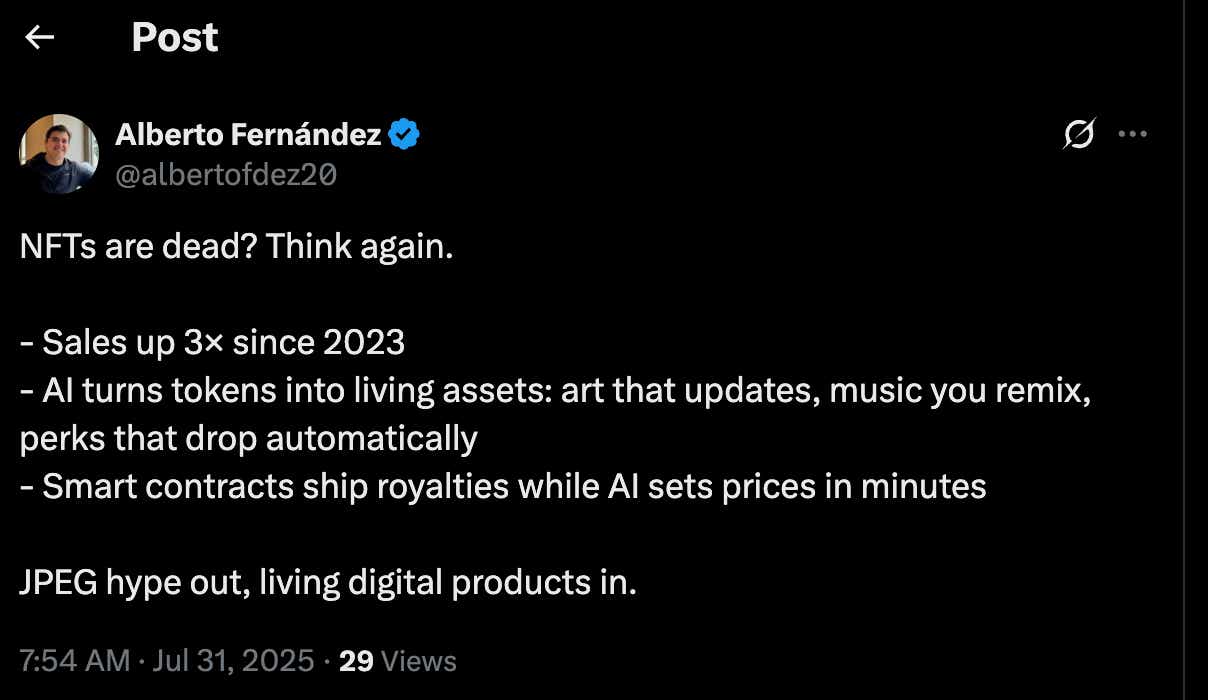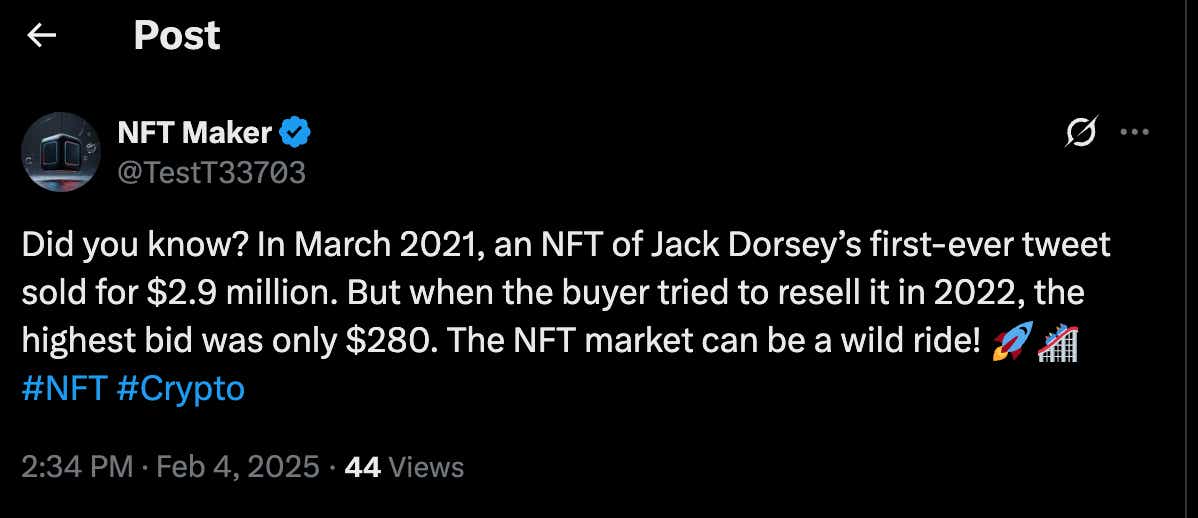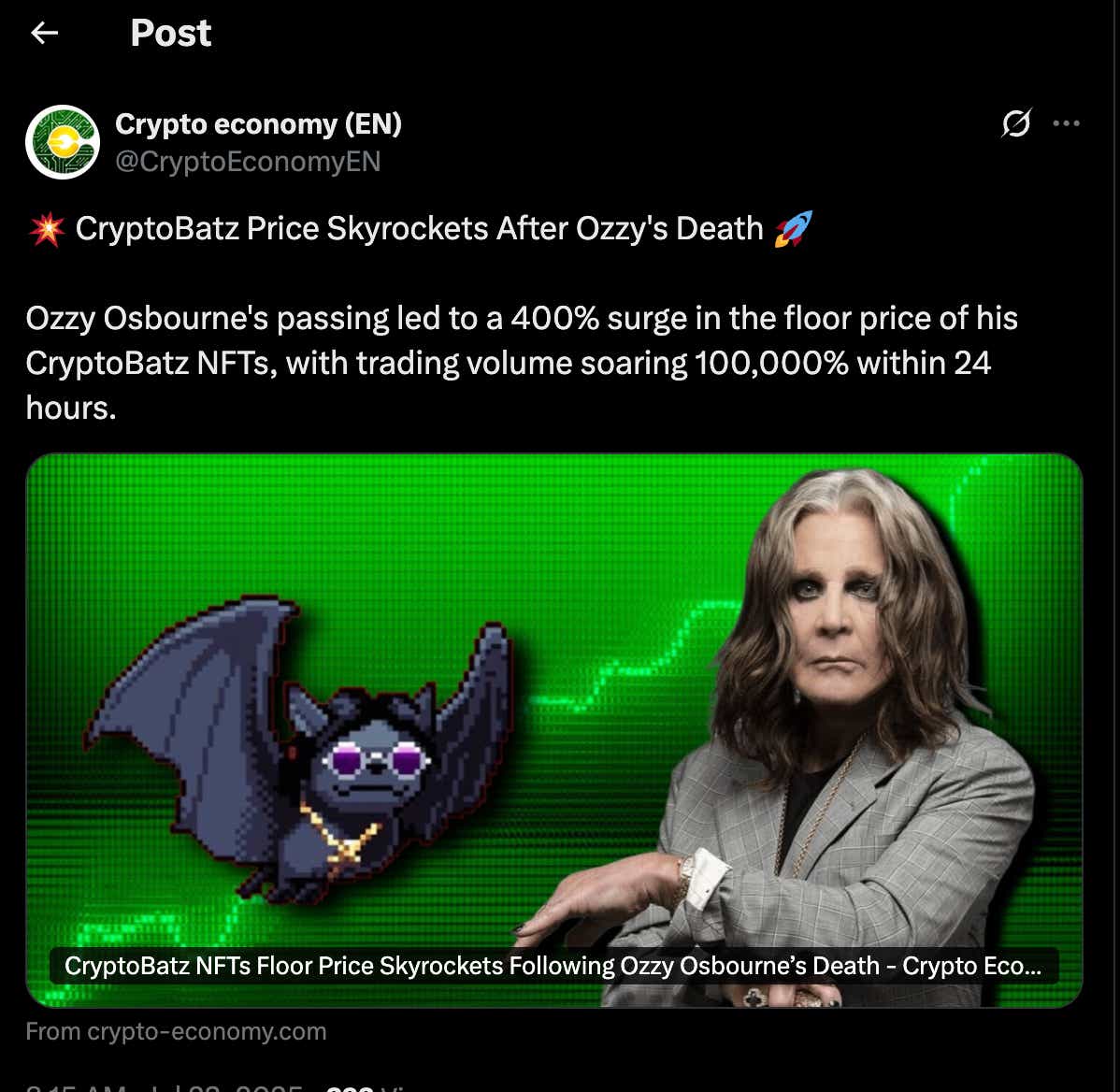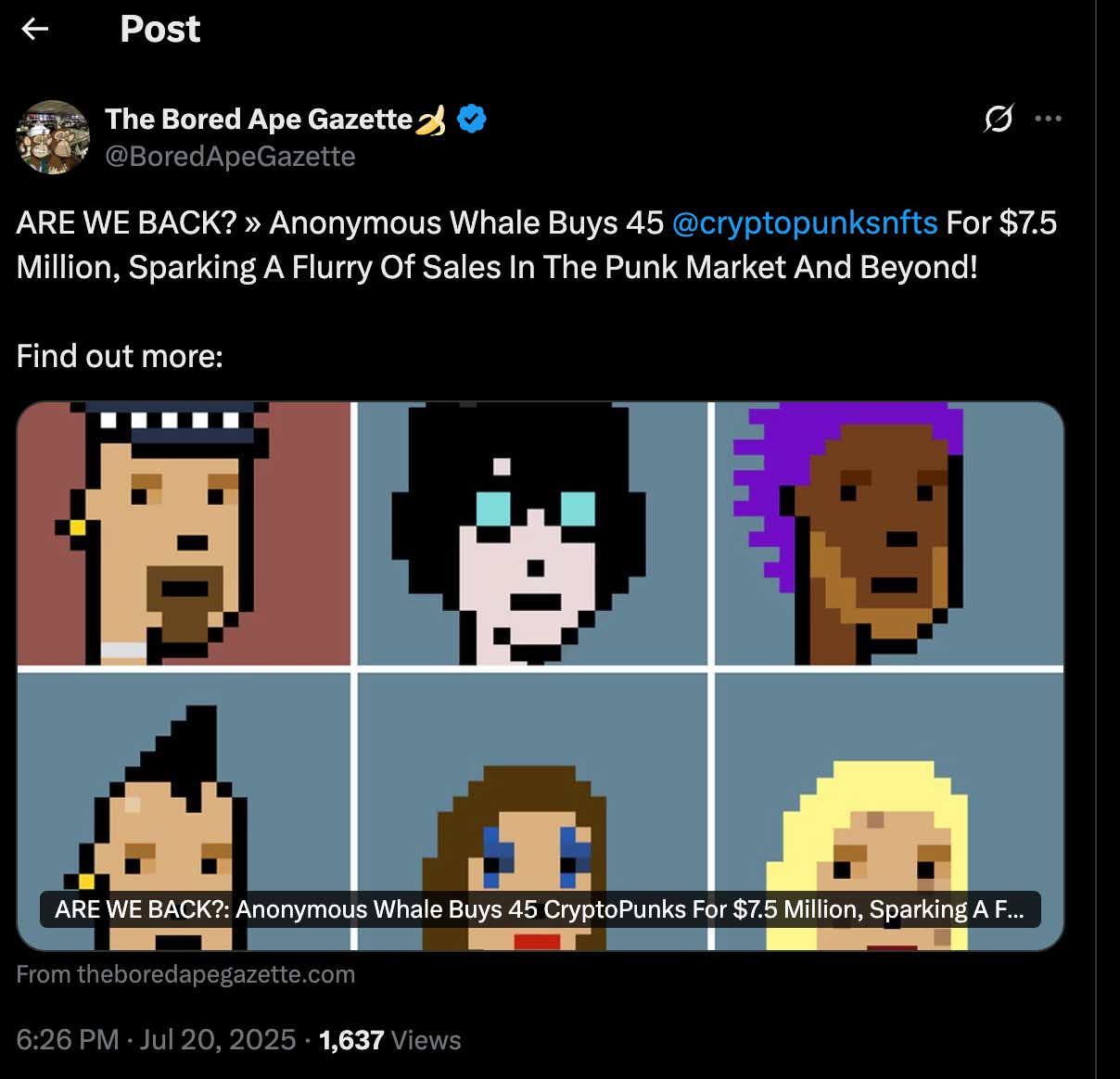The NFT Market Is Stirring — Here’s What’s Different This Time
They were left for dead … but the charts are rising again
- After a spectacular boom and brutal bust, NFTs are showing signs of life again.
- The resurgence is fueled by a broader risk-on rally and renewed interest in cultural relevance and digital ownership.
- Legacy collections like CryptoPunks and Pudgy Penguins are rebounding, while use in music and real estate point to a shift from speculation to utility.
- The market still faces trust issues, oversupply and hype fatigue but could signal a longer-term pivot from digital excess to digital legacy.
Just a few years ago, non-fungible tokens (NFTs) were the hottest thing in crypto —ban intoxicating mix of art, technology and easy money. Profile pictures became million-dollar assets. Digital artists became overnight celebrities. Then the market imploded. Prices collapsed, trust vanished and NFTs were written off as a speculative fever dream.
But something’s shifted. A rally is underway. The scams haven’t disappeared, but the conversation is changing. Floor prices are rising, legacy collections are stirring and utility is starting to matter more than hype. The question is no longer what went wrong. It’s whether NFTs still have something real to offer.

A market once based on hype
In early 2021, NFTs went from niche curiosity to global obsession almost overnight. Once the domain of crypto insiders and digital artists, they suddenly exploded into the mainstream, fueled by a potent mix of internet culture, celebrity hype and speculative mania. Everyone wanted in. Profile pictures became status symbols. Token drops sold out in seconds. And billion-dollar headlines started rolling in.
Then came the moment that crystallized the frenzy: Digital artist Beeple sold an NFT at Christie’s for $69 million. NFTs were no longer fringe. They had become fine art, internet folklore and financial rocket fuel all at once. Jack Dorsey sold his first tweet for $2.9 million. Paris Hilton peddled pixelated avatars. Within months, annual NFT sales ballooned to $22 billion, driven more by FOMO than fundamentals.
But beneath the frenzy, the data told a different story. In a little-noticed 2021 study, researchers from the University of London and IBM’s Visual AI Lab analyzed over 4.7 million NFTs spanning nearly $1 billion in transactions. The findings were sobering: Just 1% sold for more than $1,500, while a staggering 75% went for $15 or less. And most? They didn’t sell at all. “People just spend money to produce an NFT and that’s it,” one researcher remarked. This wasn’t post-crash carnage — it was the reality during the boom.
By 2023, the unraveling was impossible to ignore. According to dappGambl, 95% of all NFTs had become worthless abandoned code on the blockchain. A fresh update from NFT Evening painted an even bleaker picture: 96% of collections were now considered “dead,” with zero trading, zero community and zero hope — up from just 30% two years prior. Once-hyped assets turned into digital tombstones. Jack Dorsey’s $2.9 million original tweet? It later resold for $280. The MetaBirkins? Dragged into court and erased. What started as a cultural uprising now resembled a collective delusion.

From cultural fad to digital relic
The collapse of NFTs wasn’t just a matter of price—it was a collapse of credibility. As the market ballooned, so did the scams: broken promises, celebrity cash grabs and mint-and-dump schemes that left retail buyers holding the bag. Confidence eroded fast. Even diehard crypto insiders began to recoil. Earlier this year, Solana co-founder Anatoly Yakovenko went viral for calling NFTs and meme coins “digital slop,” comparing them to loot boxes in mobile games. Coming from the founder of a blockchain that powered billions in NFT transactions, the criticism hit like a gut punch.
And yet, not everything faded to black. In May, Yuga Labs—the powerhouse behind Bored Ape Yacht Club—announced it was donating the iconic CryptoPunks collection to a nonprofit called the Infinite Node Foundation. The goal wasn’t resale—it was preservation. Rather than treating CryptoPunks as speculative leftovers, the move reframed them as digital antiquities, relics of an early internet era worth archiving. Public exhibits are now planned in Palo Alto and Toledo, positioning CryptoPunks not as failed financial assets, but as foundational works of crypto art.
Other pockets of the NFT world haven’t just survived—they’ve evolved. Beyond the boom-and-bust hype cycle, NFTs are quietly finding traction in industries where utility matters more than speculation. In real estate, platforms like Propy are using NFTs to tokenize home ownership records, streamlining deals with blockchain-backed titles. In music, artists are issuing royalty-tracking tokens to reward collaborators and superfans directly. Adidas has tied NFTs to exclusive merchandise drops, blending digital identity with physical perks. And in tight-knit communities, tokens now serve as event passes or membership keys—far removed from the cartoon avatars that once clogged OpenSea.
Not all NFT momentum has come from market rallies or platform upgrades. Sometimes, it’s sparked by legacy—and loss. After rock legend Ozzy Osbourne passed away in July, his long-dormant “CryptoBatz” collection—once dismissed as another celebrity cash-in—suddenly roared back to life. Prices surged 400%, and trading volume spiked an eye-popping 100,000%. It wasn’t a full revival, and volumes remain far below 2022 peaks. But the moment served as a potent reminder: NFTs tied to culture, fandom and memory can still strike a chord—even in a diminished market.

Summer rally or something more?
As summer 2025 unfolds, NFTs are stirring again, riding the tailwinds of a broad-based risk-on rally. Bitcoin has hit new all-time highs. Ethereum is pushing back toward $4,000. The S&P 500 keeps breaking records. In a market where everything seems to be working, it’s no surprise digital collectibles are catching a bid — echoes of an “everything rally” are in the air.
In just the past month, total NFT market capitalization has jumped more than 50%, climbing back toward $7 billion. CryptoPunks lead the charge, now valued at about $2 billion and accounting for a third of the entire market. Pudgy Penguins have climbed to $544 million, while Bored Apes — despite fading buzz — still hold $478 million. Floor prices are rising, too: CryptoPunks are up 29%, Penguins 66.7% and Apes nearly 10%. It’s not a full-blown comeback, but it’s the strongest NFT rally in years and a reminder that even assets that have been written-off can find new footing in bull markets.
Signs of renewed conviction are starting to surface. In July, one whale made headlines by spending millions on rare hoodie-trait CryptoPunks in rapid-fire OpenSea buys. Art Blocks — a generative art platform once left for dead — saw average sale prices surge 156% after key upgrades. Even Telegram NFTs, boosted by hype around collections like Snoop Dogg’s, are selling out in minutes. Weekly trading volume has rebounded to $136 million. For the first time in years, the chart isn’t just stabilizing—it’s turning higher.

Whether that momentum can last is still an open question. Market cycles are littered with short-lived bounces, and this one could prove no different. NFTs are haunted by oversupply, damaged trust and uneven fundamentals. But there’s a growing sense that something has changed — that the story is shifting from flipping JPEGs to curating digital legacy. If that narrative takes root, the next wave of growth won’t be powered by pure speculation, but by relevance, rarity and actual utility, much like what’s driving a quiet resurgence across the broader collectibles market.
Trade with a better broker, open a tastytrade account today. tastylive, Inc. and tastytrade, Inc. are separate but affiliated companies.
For live daily programming, market news and commentary, visit tastylive or the YouTube channels tastylive (for options traders), and tastyliveTrending for stocks, futures, forex & macro.
Trade with a better broker, open a tastytrade account today. tastylive, Inc. and tastytrade, Inc. are separate but affiliated companies.